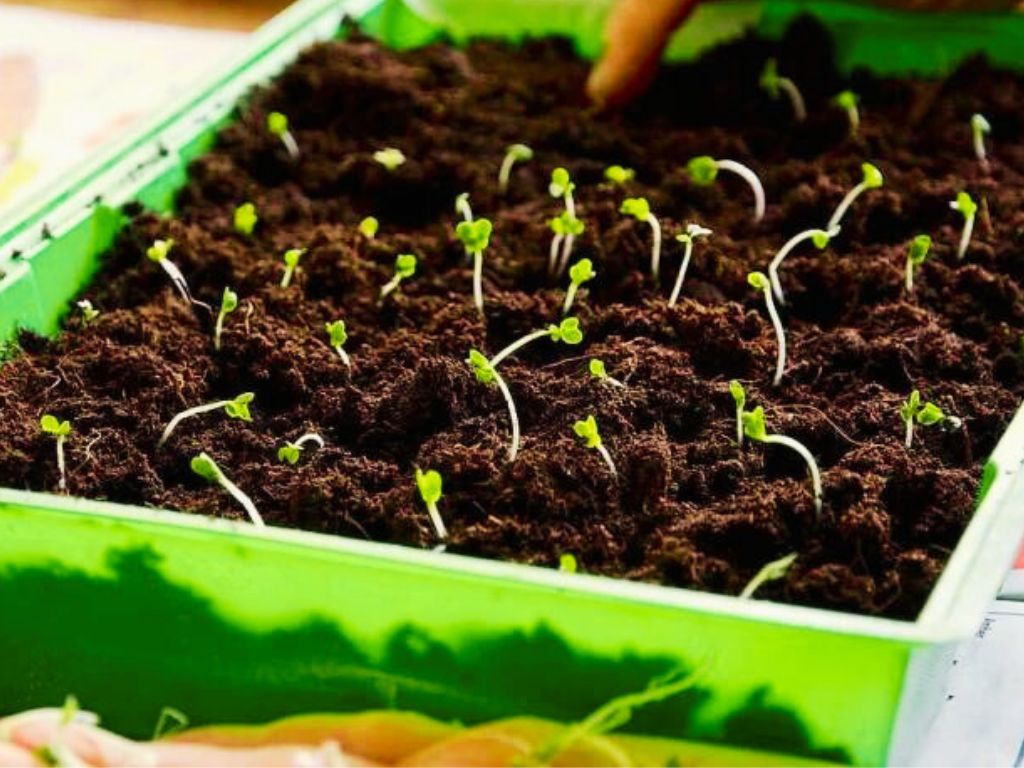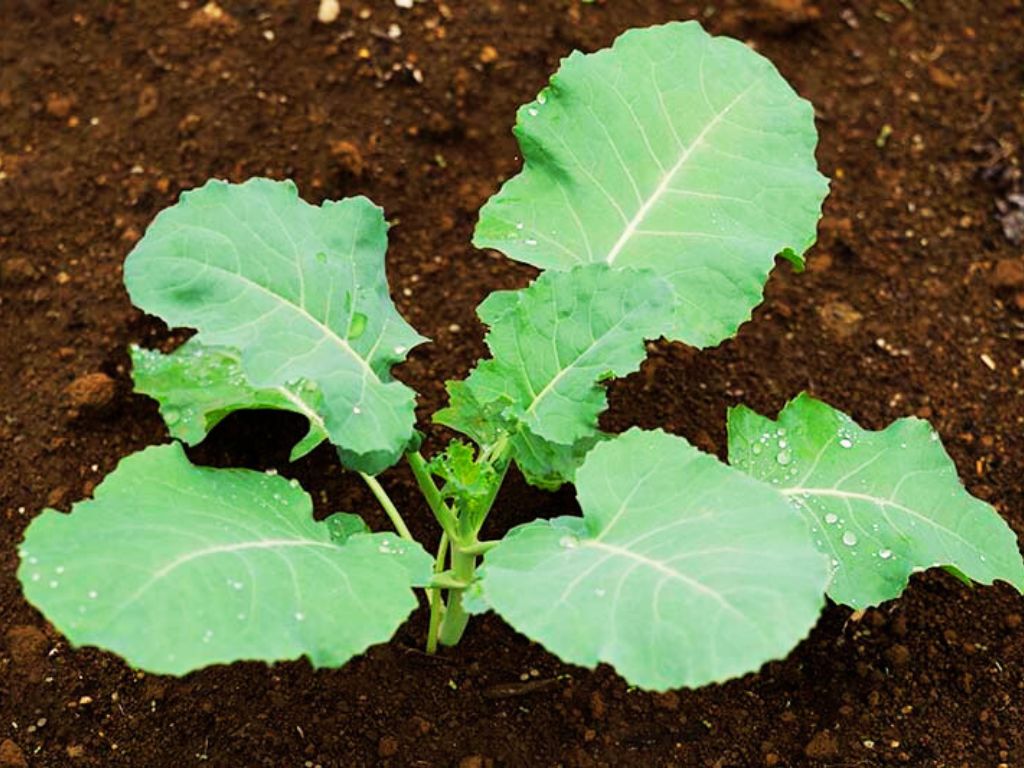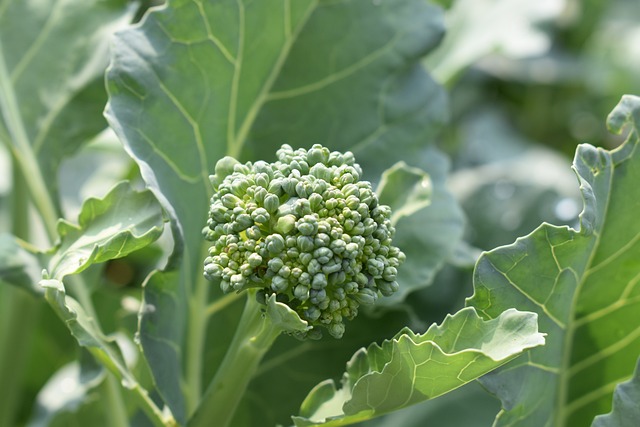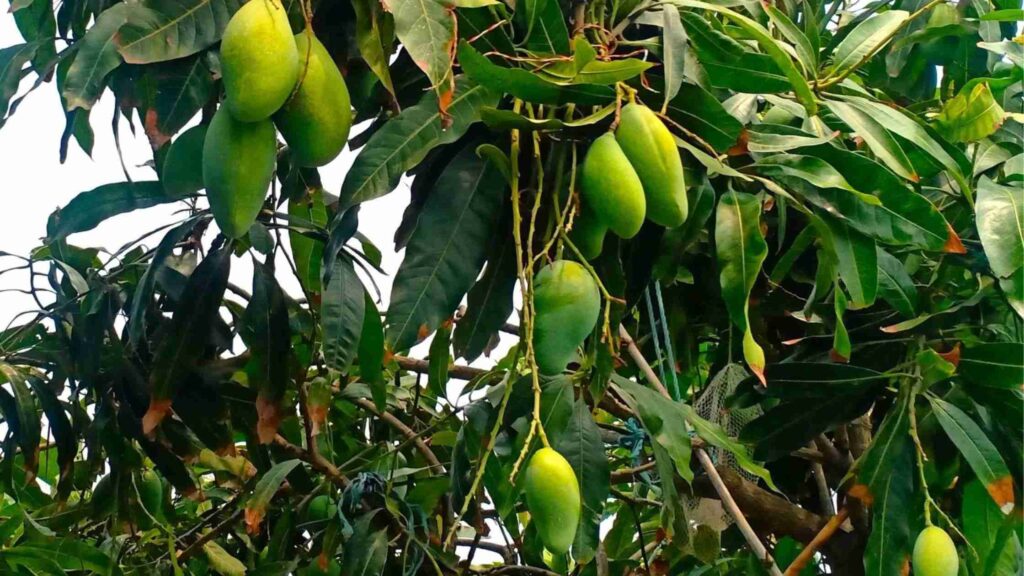Broccoli is worth cultivating purely for its nutritional value. This cole crop is high in vitamins and minerals such as vitamin A, potassium, folic acid, iron, and fibre. Here I will explore how to grow broccoli successfully in roof garden with expert tips on planting, soil care, watering, and harvesting for a bountiful and nutritious crop.
Duration of Planting
Broccoli, a cool-season crop, should be begun during the early winter months, which are perfect for seed germination.
Container Selection
Almost any container with drainage holes at the bottom and a minimum depth of 4 to 6 inches can be used to start seedlings. For seedlings, use potting soil made especially for that purpose, or make your mix by blending 30% coco peat, 40% garden soil, and 30% vermicompost. Before sowing the seeds, moisten the soil mixture.
Planting the Seeds

To promote a high rate of germination, uniformly distribute the tiny seeds throughout the soil’s surface, taking care not to overlap. To ensure proper contact, lightly cover the seeds and gently press the dirt down. Plant broccoli seeds only half to a quarter of an inch deep because they are tiny. Use a tiny watering bottle or a mister to mist the recently planted seeds.
For best germination, place the container in full sun and aim for 6 to 7 hours of sunlight every day. Particularly in the first 12 to 15 days, make sure the soil mixture is consistently moist. In five to ten days, broccoli seedlings usually start to show. Daily check for moisture in the soil, and water as necessary.
Verify the soil’s moisture content with your hands after 28 days, adding water as needed. Examine the area immediately beneath the surface with your fingers since it can dry out. Water your plants frequently to ensure that the soil is consistently moist, especially in the early phases of growth.
Transplant the Seedlings

Usually, 28 to 35 days after germination, transplant seedlings when they are 5 to 7 inches tall. Using a gardening tool or stick, carefully remove the seedlings so as not to damage their fragile roots. Pay less attention to how long the germination process takes and more attention to the height and development of the plants.
Use large pots (22 inches in diameter and 14 inches in depth) to plant broccoli; each pot should accommodate four seedlings. Make sure the seedlings are planted deeper than they were originally by excavating holes that are 4 to 6 inches deep.
Because broccoli grows roots along any hidden area of the stem, planting your broccoli plants deep in the soil promotes higher growth. Since broccoli plants are big eaters, they require room to grow healthily. They will not grow as well if planted near together. Therefore, for optimal growth, leave as least 8 to 10 inches between two broccoli plants.
Space the Seedlings
Space seedlings 8 to 10 inches apart in containers and in ground space them one to two feet apart. Dampen the soil with a thorough watering after transplanting.
Sunlight
Broccoli requires the site with exposure to full sun at least 6-8 hours per day. Lack of Sunlight may produce them with leggy plants and subpar heads. And make sure to keep the soil mix evenly moist for the first 12-15 days for constant growth.
The seedling develops 3 to 4 leaves after 40 days, and its stem is 4 to 5 feet tall. Water your plants frequently to ensure that the soil is consistently moist, especially in the early phases of growth.
To drive the plant to focus its energy on the upper portion of the plant, which will eventually yield broccoli heads, the plans begin to enlarge after 54 days and destroy the lower leaves. As soon as you find undesired plants or weeds in pots, get rid of them. Using a fork or trowel, carefully remove them so as not to damage the roots. You’ll have a serious issue if you don’t try to remove all the roots and never allow weeds to reach the seed.
Fertilizing

After 60 days, fertilize your plants after every 18 to 20 days using organic nitrogen-rich fertilizer, cattle manure, and leaf mold for fertilizing broccoli plants. Mix well in this soil and water immediately after adding Fertilizer in this soil.
This stage is growth between germination and flowering is known as the vegetable phase of plant development. The plant concentrates on growing upward at this stage and storing resources for when it flowers.
Check the moisture content of the soil after 68 days, and water the plants anytime the soil seems dry to the touch. Instead of letting the water decay on the plant’s crowns, where it could promote rot, it should be applied to the roots.
The plant will now concentrate its energy on upward growth and head creation after 75 days. The plant nearly completely stops growing vegetative to generate the main flower head, which sets the top broccoli stem. All internal resources are then focused on this process. A tiny pot with a diameter of 6 to 10 should be plenty for growing broccoli. One plant will work best for this size. For maximum plant growth, side-dress broccoli with aged vermicompost manure when planting and then again, every 20 days. Regular irrigation will maintain a consistent soil moisture level, particularly throughout the head production phase.
When the broccoli seeds are 80 days old, you can cover them with leaves to keep the heads dry. While leaves shield the head from illnesses and paste, they can also promote decay.
Harvesting

After 85 days, the perfect time to harvest is right before the broccoli flowers look for closed flower heads. Yellow flowers mean the quality clock is already counting down so harvest immediately. Cut heads from the plant, taking at least 5 to 6 inches of stem. Include at least 6 inches of a stem per broccoli head leave any side shoots to finish developing and then harvest too.
The broccoli harvest is extended because each of these side shoots grows into a smaller, harvestable head of broccoli after 92 days. Broccoli should always be harvested in the morning while the buds are tight and firm, just before the head flowers.
Most people don’t realize that the blossom head of a broccoli plant is edible; it is picked before the plant blooms. Broccoli is worth growing since it provides a wealth of nutritional benefits. This vegetable is high in potassium, iron, fiber, folic acid, and vitamin A, among other minerals and vitamins.
Broccoli should always be harvested in the morning after 100 days, right before the head flower, when the buds are tight and solid. Harvest the petals right away if you notice any yellowing, as the quality will quickly decline. After the first head has been harvested, continue a vigorous feeding and watering regimen to encourage the growth of a second head. After the primary head is harvested, most kinds will continue to grow side branches. If your summer isn’t too hot, you can pick from a single plant for several weeks, or even from spring through summer.
Pests and Disease Management
In addition, bacterial and fungal infections might hinder the growth of broccoli. Numerous broccoli plant leaf spot illnesses. Crop rotation is recommended to prevent the growth of Escherichia coli bacteria in one location more than once every three years. Plants should be spaced correctly to allow for enough air circulation. To keep the plants as dry as possible, water directly into the soil. The broccoli head’s development will be impacted by the high temperatures. The goal is to allow broccoli to reach maturity either ahead of or after high temperatures are predicted.



